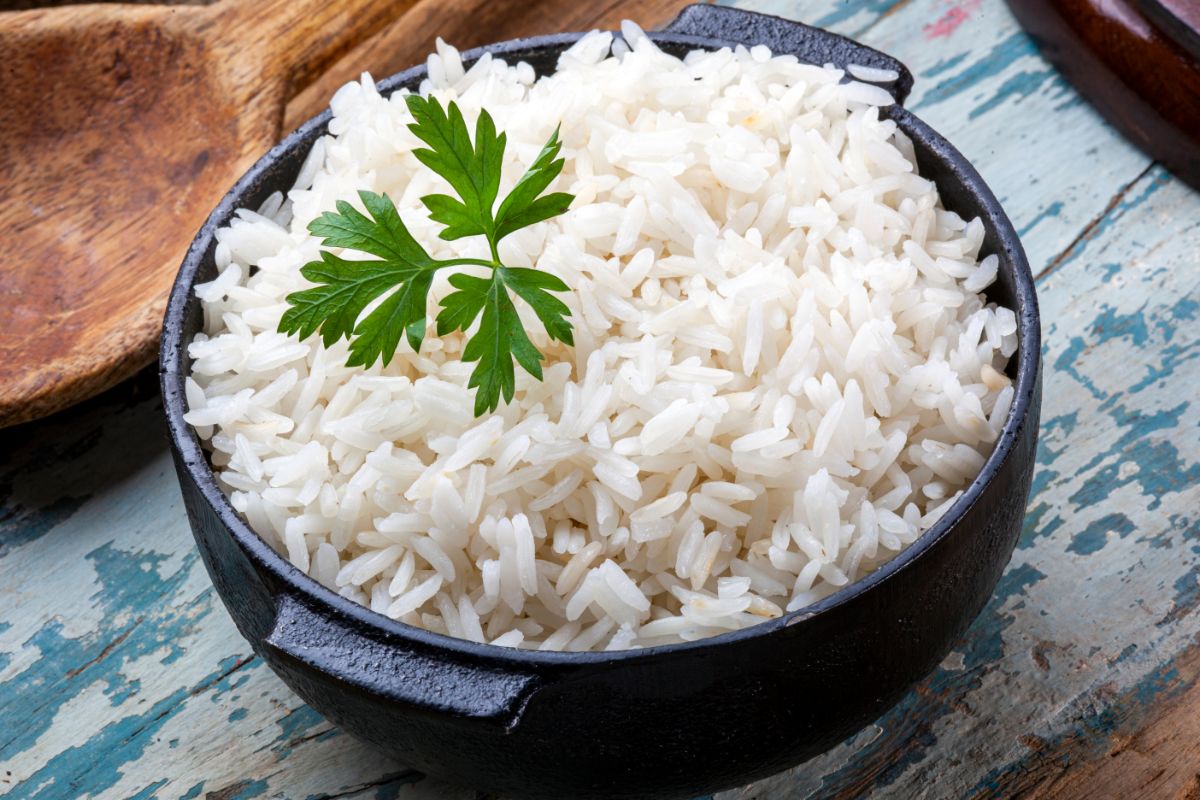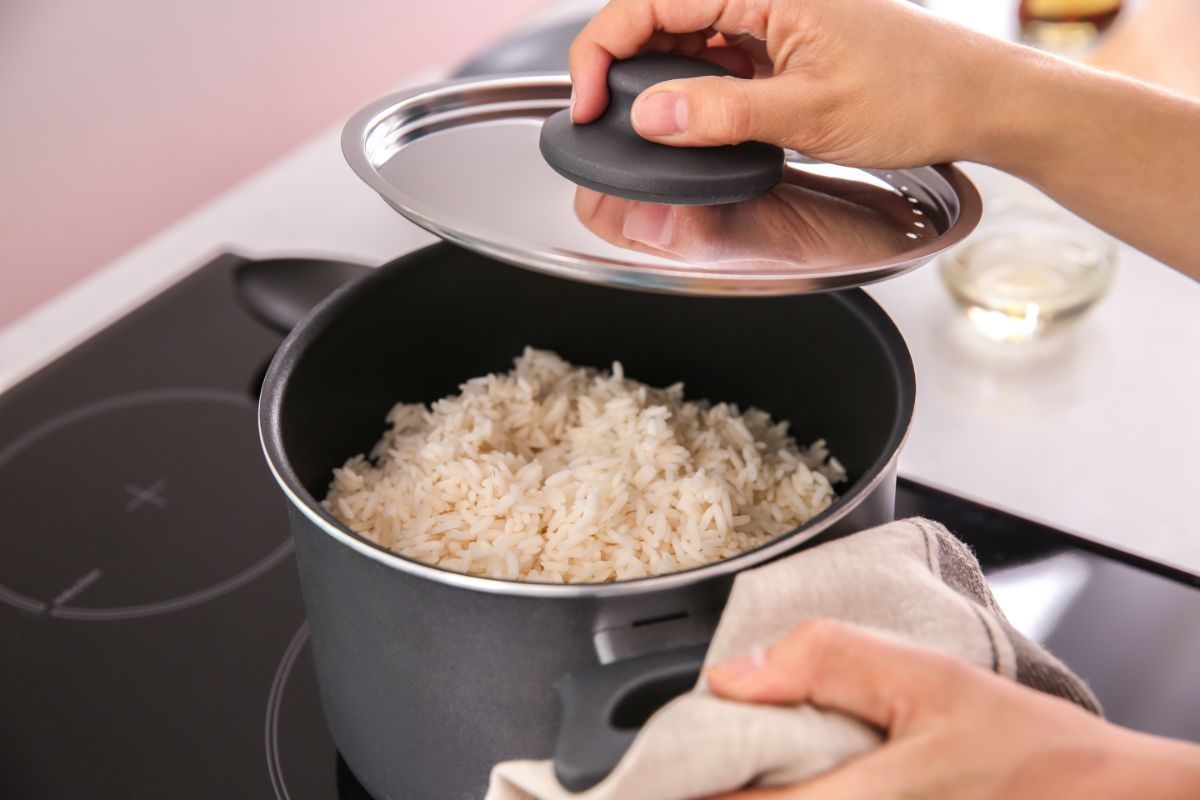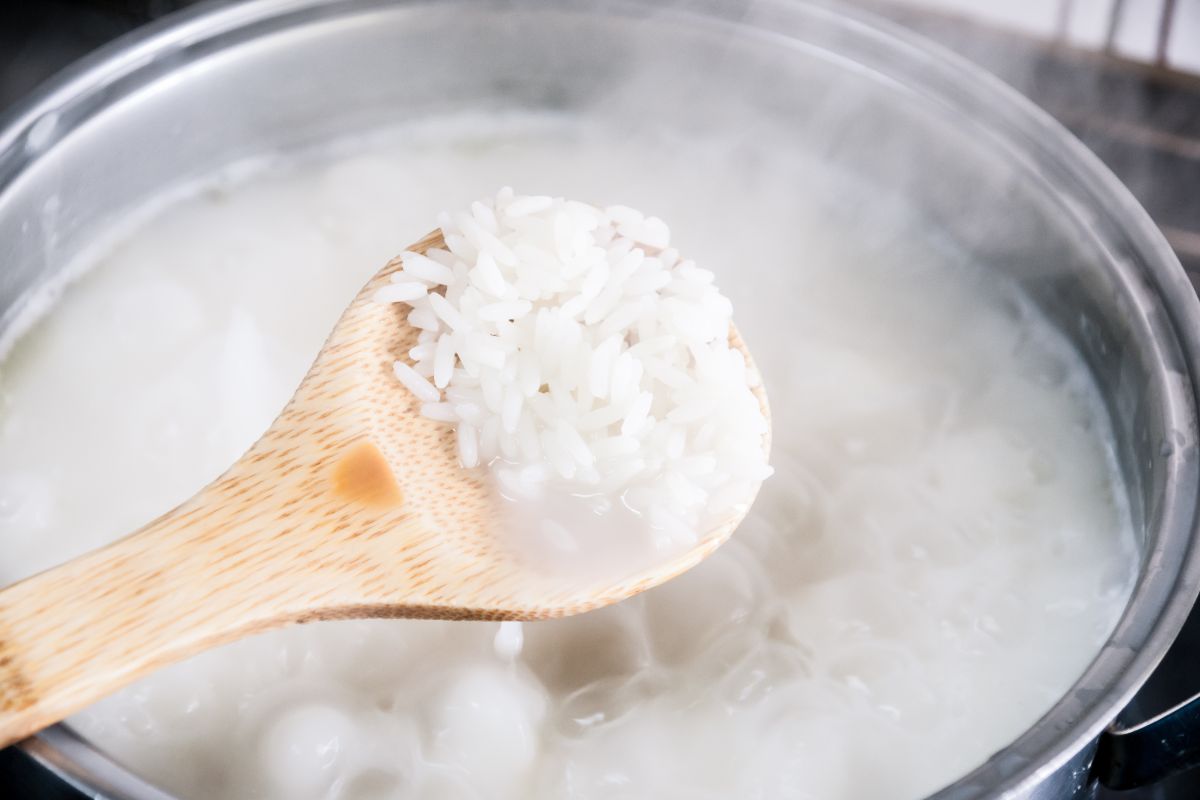If you have made rice at home and it is sticky, you may be wondering why my rice is sticky. This is a commonly asked question as rice is deceptively difficult to make and takes some time to really master.
Sticky rice is still perfectly edible and can be very delicious in many cases, but it is not what most people are going for when they make rice. As sticky rice can have a mushy consistency that can be quite unpleasant for most.
This can also interfere with the kind of recipe that you are making with that rice as sticky rice may not quite work with it. So it is important that you understand what causes sticky rice and how you can try to avoid it.
Keep reading to find out why your rice is sticky and some things that you can do in order to prevent this from happening when you cook rice again.
Why Is My Rice Sticky Once Cooked?
If you are trying to find out why your rice is sticky, there are many reasons why this may happen. The most common reason for sticky rice is that you use too much water, and the rice absorbs it, creating more starch than necessary.
Rice only requires a very specific amount of water in order to become perfectly cooked and tender. Too much water and each rice grain is going to soak up too much water and produce much more starch, which creates a sticky coating all over it.
This can also happen if you skip rinsing your rice before you put it in the water to be cooked. Even dry rice is covered in powdered starch that is just waiting to become glutinous and sticky.

This is why rinsing your rice is important, as this helps to remove this starchy coating before adding your rice to the water. Once your rice is in the water and is cooking, this is too late, and the starch is already going to start making your rice sticky as it cooks.
While sticky rice is not entirely bad, the majority of people do not want their rice to be sticky. Especially if you want to enjoy your rice on its own, as stickiness does not create a very nice texture.
How to Fix Sticky Rice?
If each time you make rice, it comes out sticky and gummy, there are certain reasons why this is happening. Once you have cooked the rice and it turns out sticky, there is very little that can be done at this point.
Sticky rice is what it is, and there isn’t much you can do to fix it once the damage has already been done. But there are many ways that you can prevent this problem from ever happening with a few simple tips.
Rice can feel very difficult to make, but it doesn’t have to be if you know exactly what you are doing. There are certain tips that you should follow in order to make perfectly fluffy and tender rice that has not become sticky.
Rinse Rice
The first thing that you should do before you ever begin cooking your rice is to rinse it out. Rice comes with a thin layer of starch all over the grain which becomes glutinous and mushy when it is added to the water and cooked.
This only increases the starch that the rice puts out, increasing that stickiness that we are trying to avoid. This is also just a good practice to have as it makes sure that the rice is clean before you add it to the water to cook.
There are all kinds of things on our food that we probably don’t want to be consuming, so washing the rice off is always a good idea.
Rest and Fluff
Once you have cooked your rice, the next thing you should do is let the rice rest before you flush it. This is important as the rice will continue to cook even once the heat has been turned off and it is allowed to sit.
This rest time guarantees that all of the rice will be evenly cooked, and the bottom will not be more cooked than the top. This helps to prevent the bottom of the rice from being soggy and overcooked in the top from being perfect.
Once your rice has rested you want to lightly fluff it with a fork, don’t stir it. You don’t want to be too aggressive, as you will simply break up the rise and start to create a sticky mass, which is exactly what you are trying to avoid.

No Overcooking
When cooking rice, it is very important to make sure that you are sticking to the specific cooking time necessary. You do not want to overcook the rice or undercook it, as either option is going to not be very good.
You do not want to overcook your rice, as this can result in the rice becoming burnt and stuck to the bottom of the pan. This can also result in the rice absorbing too much moisture and becoming too fat and sticky.
You also don’t want to undercook your rice as it will be al dente, which will result in a slightly crunchy grain. This is not pleasant either and should be avoided as well to get the perfectly cooked rice that you want.
You should preferably be using a rice maker but if you are making rice on the stove, make sure you set a timer.
Add Fat
One way that you can try to save rice that is sticky after you have cooked it is to add a fat. Some people believe that this helps to break up the stickiness of the rice and gives it a dryer feeling when you eat it.
You can do this with a neutral cooking oil such as olive oil or with melted butter if you want something that will bring a little bit of flavor. You should be very sparing as you do not want to make the rice feel greasy.
A little bit of oil can help to break up the grain and keep it from sticking together as badly. This definitely does not solve the issue, but it can help if the damage is already done and your rice is sticky.
Chill
Another way that you can try to save sticky rice is to chill it instead of eating it immediately. You can’t put the rice in a container that is uncovered and stick it in your refrigerator for 30 minutes to an hour before serving it.
Chilling the rice can help to dry it out some white, reducing the stickiness that it had when you first cooked it. You may want to break it up with a fork often as it is chilling if it is very sticky and wants to solidify into a block.
This will not fix the problem entirely, but it can help the rice to feel dryer when you are eating it. Especially if it came out quite sticky and glutinous.
White Rice Is More Likely to Get Sticky?
If you enjoy making rice at home, it is important to know what kinds of rice have a tendency to get sticky. White rice is more likely to become sticky and mushy when you cook it, as it is more starchy.
A rice option like brown rice is far less likely to become sticky as it still has the exterior skin keeping the starch inside. While white rice has that brown skin removed, leaving all of the starchy grain exposed when it is cooking.

This is something to keep in mind if you have a lot of issues with your rice coming out sticky. If you can’t seem to master white rice, you may want to try other rice options to see if you have more luck cooking them.
Sticky Rice Can Also be Good
If you have made rice that is sticky, it is important to know that this does not mean that the rice is ruined. There are still different things that you can do with sticky rice even if they don’t necessarily go with the dish that they were meant to go with.
You could add that rice to some milk and sugar and cook it down until you have a porridge-like consistency. This makes a delicious oatmeal alternative that you can enjoy as a dessert or a breakfast the next morning.
You could also use the sticky rice and combine it with other ingredients as a taco filling or burrito filling. Sticky rice holds together better and will create a more sturdy filling for other dishes so that it does not go to waste.
Final Thoughts
If your rice keeps coming out sticky, this is most likely due to adding too much water, overcooking it, or not rinsing it off before cooking. These are all things that can result in your rice becoming very sticky and glutinous.
You can avoid this problem by only adding as much water as needed, rinsing your rice, and letting the rice rest after it has cooked.
